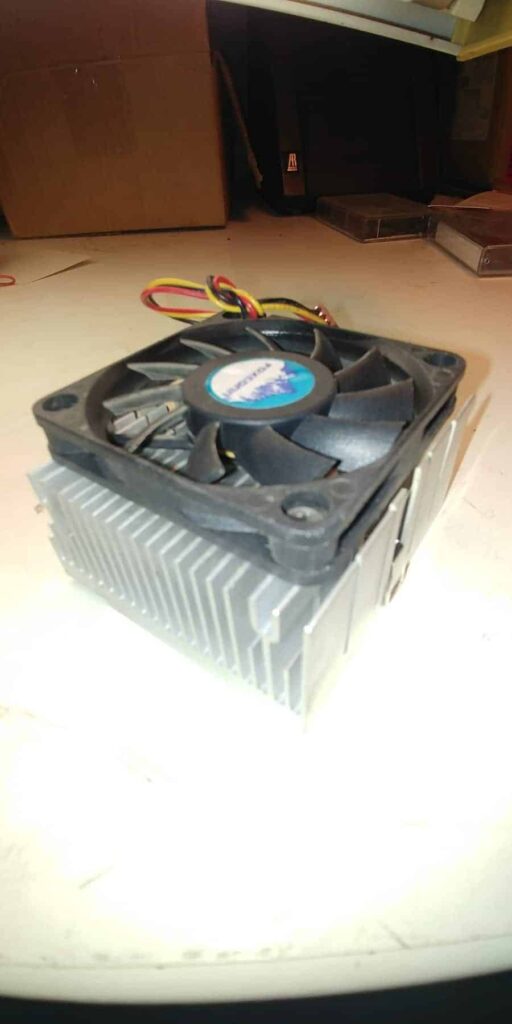The 2nd law of thermodynamics states the heat travels to cold. Even though heat rises some of that heat will go to the cold floor.
So depending on how cold your floor is would have something to do with how much heat is lost through the floorboards or concrete.
Have you ever heard of a “heat sink”? This is a device that literally and passively sucks the heat out of an object. Your house can be that object and any cold floors can be that heat sink.

If you have ever looked inside a computer you may have seen one of these heat sinks.
Usually placed over the computers processor to draw heat out of the processor and keep it cool so it runs fast.
This heat sink is aluminum which has certain properties that easily absorbs heat. The fan helps remove the heat and keeps the aluminum finned heat sink cooler.
The earth beneath you is one gigantic heat sink. Depending on the construction of your home the earth can suck a lot of heat out of your house.
If your house is built on a concrete slab and that slab was poured directly on the ground without a barrier or insulation you’ve got the ultimate heat sink.
Crawlspaces can be effective in lowering the average heat loss in a house when compared to an uninsulated slab floor as long as vents are well closed in the winter and allowed to breath in the summer.
How Much Heat Is Lost Through An Uninsulated Floor?
Estimates hover right around 10% of your energy costs are sucked into that gigantic heat sink called Earth. Those numbers will change with insulation obviously.
Types of insulation and the quality of the installation will dramatically effect the loss of heat through the floor.
This question is here to prompt you into finding out. There is no way I could tell you with out knowing all the perimeters of your home.
Type of construction, amount of insulation, and the area you live in are only the beginning questions of what a professional HVAC contractor would need to know to determine that heat loss.
You could be spending enough in a very short time in utility bills to pay for a complete manual J report. Then you would know which direction to take to lower your bills.
How To Remove Cold Air From Your Floor
We owned a split level home built on an uninsulated concrete slab. The family room was on that slab and it could draw the heat right out of a warm body. It was heated with one gas furnace and all the ducts were installed in the ceiling of the lower floor.
When switching between seasons we focused all the heat to the lower floor by closing vents to the second floor and let the heat rise through the house.
We did the opposite in the summer and closed all the vent on the first floor and sent most of that nice cool air to the hottest parts of the house.
I was aware of the problems created by closing vents and made the proper measurements and precautions to prevent overheating in the winter and freezing coils in the summer.
But the best solution to removing the cold air hugging the floor was a return duct at the floor level sucking that cold frigid air off the floor and running that air through the furnace and heating it up.
Good practices for ducting a force air system is to have 60% of the return high in the house and the other 40% low to provide a mixture of air to the furnace.
Too often do you see even in newer so called efficient homes, just one return duct and even then not located in the best place.
That one return will not be as effective as two or more that pull the high hot air and the low cool air into the furnace to provide and even heat throughout the home.
How To Detect Heat Loss In A House
One way to know how to reduce heat loss through the floor would be to hire a professional. Many HVAC companies have equipment to know where the loss of heat in a home is most prevalent.
They use tools such as thermal imaging, blower doors or even preform a manual J calculation that will show where the weak spots are in your abode.
If you are inclined to DIY then start with an infrared thermometer or a thermal imaging camera. You won’t be far off from the price of a blower door test or other service charges that will result from hiring a professional. Depending of course on how high end you want to get with your new tools.
I’ve used the infrared thermometer to measure many points in my home and those of my customers. An infrared thermometer
How Does Carpet Reduce Heat Loss
Like any material there are some better than others. Starting with the carpet pad you can choose an high R-value pad that depending on the thickness of the pad can provide up to R-2.15 of insulation between that cold floor and you cold feet.
Carpets and padding are constantly improving on there durability and how long they last. If it’s a possibility that you need carpet then I’d check with your local carpet people and ask the pertinent questions that will lead you to a warmer floor.
Did you know they make a memory foam carpet pad? Memory foam will get more pliable and even become softer when exposed to heat. Sounds like it would work well over a heated floor.
Should You Heat An Unfinished Basement In The Winter?
This is a personal struggle for me. We have a front porch with a concrete floor that is actually the ceiling for a small room in our basement. This small room is used as a fruit room.
A fruit room was more common in construction many years ago. This room stay pretty cool year around.
My heating system for the main floor is a water source heat pump located in the basement and all the duct work uninsulated.
That uninsulated duct makes the floor in certain areas of the house very warm and comfortable for even the bare feet.
I’d open the the duct work in the basement and allow some heat to slightly raise the temperature down there if it wasn’t for that fruit room. Keeping the door closed on the fruit room causes the humidity to rise in that room.
I guess what my point is, every situation has a set of problems and needs to be addressed in a different way. Research is the best answer and testing when appropriate and affordable.

